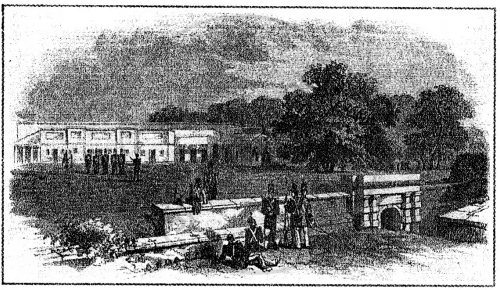Advertisements
Advertisements
प्रश्न
Match the contents of Column A and Column B:
| Column A |
Column B |
| 1. 1767-1769 | (a) Regulating Act passed |
| 2. 1773 | (b) British expansion under Lord Dalhousie |
| 3. 1803 | (c) Punjab annexed to British Empire |
| 4. 1845 | (d) First Anglo-Sikh war |
| 5. 1849 | (e) First Anglo-Mysore War |
| 6. 1848-1856 | (f) Treaty of Bassein |
उत्तर
| Column A |
Column B |
| 1. 1767-1769 | (e) First Anglo-Mysore War |
| 2. 1773 | (a) Regulating Act passed |
| 3. 1803 | (f) Treaty of Bassein |
| 4. 1845 | (d) First Anglo-Sikh war |
| 5. 1849 | (c) Punjab annexed to British Empire |
| 6. 1848-1856 | (b) British expansion under Lord Dalhousie |
APPEARS IN
संबंधित प्रश्न
In 1765 the British signed treaties with the Nawab of Bengal. Mention any two important terms of this treaty.
Fill in the blanks:
The Governors-General during the First and Second Anglo-Maratha Wars were _____________ and ____________, respectively.
Match the Column:
| Column A | Column B |
| 1. Subsidiary Alliance | (a) Ruler of the Sikh kingdom |
| 2. Hyder Ali | (b) paramount power in India |
| 3. Ranjit Singh | (c) Ruler of Mysore |
| 4. The doctrine of Lapse | (d) Lord Wellesley |
| 5. English East India Company | (e) Lord Dalhousie |
Choose the correct answer:
After the Third Anglo-Maratha War, the British placed a descendant of Shivaji on the throne of _______.
Choose the correct answer:
The widespread resentment against annexations expressed itself in the Revolt of________.
State whether the following is true or false:
The Subsidiary Alliance proved very advantageous for the Indians.
Answer the following question in one or two words/sentences:
What was the main objective of the Subsidiary Alliance system?
This is a picture of a fort built by the British.

Identify the building.
This is a picture of a fort built by the British.

When did the British purchase the three villages to develop into a city? Also, name the villages and the city.
Answer the following question:
What were the results of the First Anglo-Mysore War?
